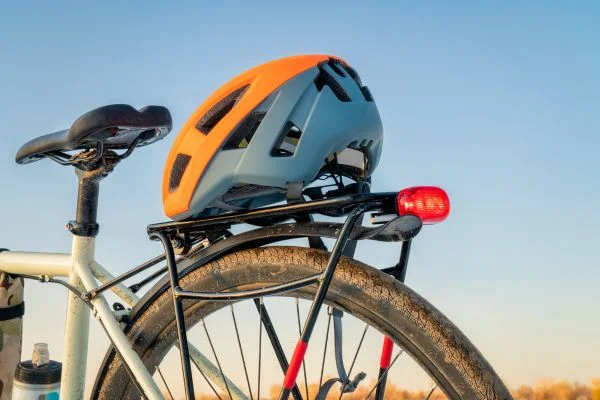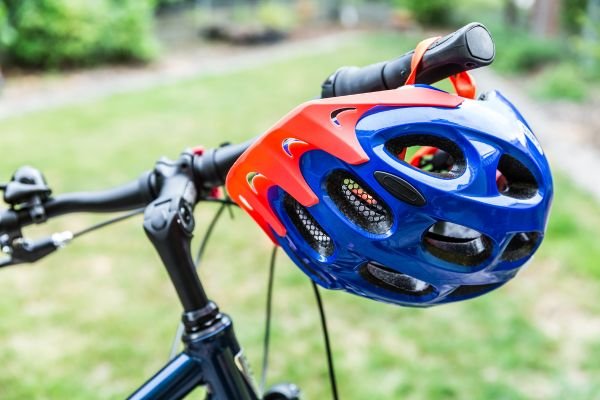When you’re gearing up for a climbing trip, you want to ensure you have the right equipment. However, it can be unclear what type of helmet is best for each activity, so you may wonder if a bike helmet will work for rock climbing. So let’s take a look at the facts and help you decide Can I Use A Bike Helmet for Climbing or not?
A bike helmet for climbing is not suitable. It lacks the necessary protection and features for climbing, such as impact resistance and proper ventilation. Use a climbing-specific helmet for safety.
The Difference Between Bike Helmets and Climbing Helmets
The most crucial difference between bike helmets and climbing helmets lies in their construction. Bike helmets are designed to protect cyclists from falling onto a flat surface, while climbing helmets are built to protect climbers in the event of falling debris or rocks.
Climbing helmets are typically made with hard plastic shells over foam padding, and they often include vents or breathable mesh that keeps your head cool while providing adequate protection.
However, most bike helmets are made with soft foam covered by a thin layer of plastic, which offers less protection from falling debris than hard-shell climbing helmets. In addition, bike helmets typically lack ventilation, making them unsuitable for hot weather activities like rock climbing.
Also Read: How Should a Climbing Harness Fit?
Can I Use A Bike Helmet For Climbing?

Although it may seem tempting to use a bike helmet for rock climbing (especially since they’re usually lighter and more affordable), it is not recommended to use one when tackling large walls or cliffs.
The lack of ventilation can make it uncomfortable on hot days, and the thin protective layer won’t provide enough protection against falling objects or sudden movement while climbing.
Additionally, bike helmets aren’t designed to stay secure on your head while in an upright position (like when you’re climbing), so there is an increased risk that it could slide off if you were to slip or fall suddenly during your climb.
Also Read: What Do You Need For Ice Climbing?
Pros of Using a Bike Helmet for Climbing
The primary benefit of using a bike helmet while climbing is cost savings. Compared to typical climbing helmets, bike helmets are significantly less expensive—sometimes as much as half the price or more. Additionally, since many climbers own bike helmets, they won’t have to purchase any additional gear to climb safely.
Another plus to using a bike helmet for climbing is its look and style —many bike helmets offer cool designs with multiple color options and patterns that not all traditional climbing helmets do.
Finally, some bike helmets offer adjustable straps and chin guards, making them more comfortable than typical rock-climbing helmets.
Also Read: How To Measure Your Head For a Climbing Helmet?
Cons of Using a Bike Helmet for Climbing
The main downside to bicycle helmets for climbing is their build quality—they are often made from plastic. In contrast, rock-climbing helmets are made from rigid foam material, which provides better protection against rocks and other debris that could come flying down during a climb.
Furthermore, most bike helmets don’t provide adequate ventilation compared to rock-climbing models, so they tend to get hot quickly if worn during strenuous activities like rock climbing or rappelling.
Finally, it’s important to note that many bicycle helmet manufacturers explicitly state on their packaging that their products should not be used for any mountaineering activity.
So even though it might seem safe on paper, it’s always best practice to err on the side of caution by investing in an actual rock-climbing helmet explicitly designed with your needs in mind!
Also Read: Do You Need Helmet For Rock Climbing?
What Should a Beginner Wear For Rock Climbing?
If you are new to rock climbing, safety and comfort need to ensure you have the right gear. The essential piece of clothing is a good pair of climbing shoes with sticky rubber soles; they provide the traction needed for good footwork on the slabby or vertical walls.
Additionally, breathable garments such as shorts or stretchy pants make movement more accessible, while cotton shirts and hoodies will complete your ensemble.
A helmet is also necessary to keep your head safe during climbs, and gloves if you are bouldering indoors; outdoor gyms usually allow their rentals in addition to their crash pads.
Finally, don’t forget water and a snack – no one wants to stop an ascent due to hunger! With these basics, you can confidently take on your climbing challenges and enjoy every climb!
Also Read: What Size Climbing Helmet For a Man?
Conclusion:
In conclusion, the answer to the question can I use a bike helmet for climbing? While there might be some advantages to using a bicycle helmet while rock climbing, it’s ultimately not recommended due to the lack of protection offered by these products compared with purpose-built models explicitly made for mountaineering activities like rappelling or bouldering.
However, if cost is an issue or style matters more than safety, it could be worth considering purchasing a good quality bicycle helmet specifically designed for cycling activities instead!
Ultimately it’s up to each climber (or aspiring climber) to decide what kind of protective headgear works best for them —make sure you consider all factors before making any final decisions!

